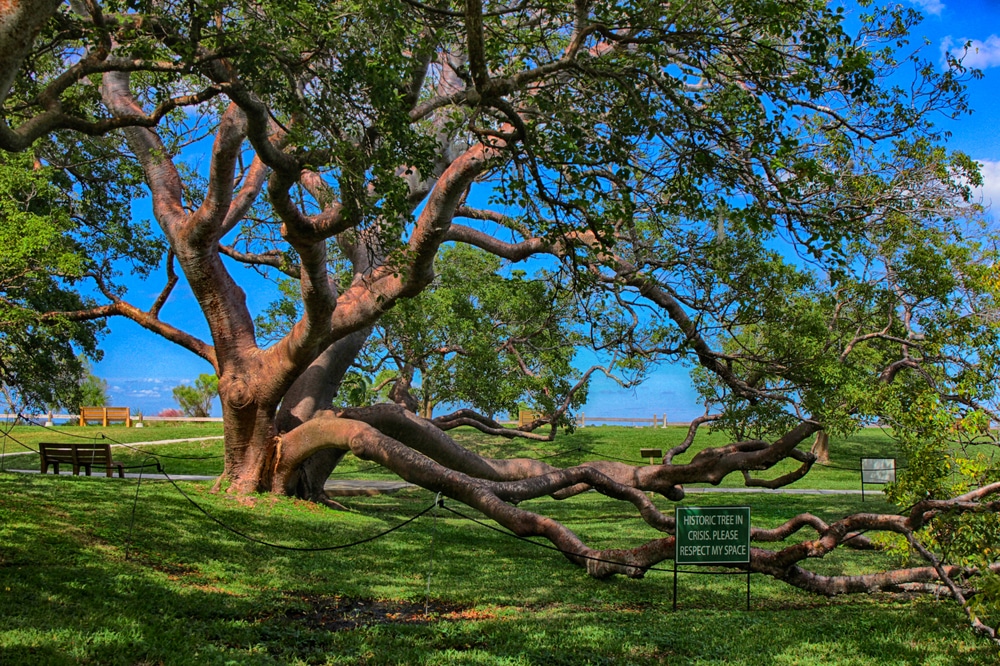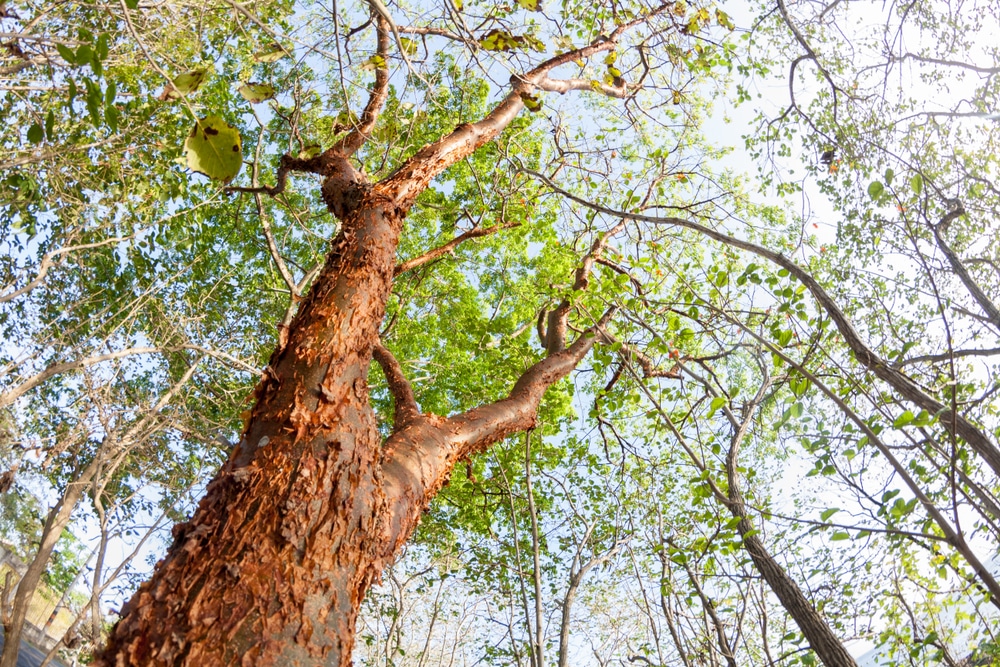The large evergreen Gumbo Limbo Tree is very attractive because of its coppery bark which is smooth and shiny. The bark is peeling which resembles the burnt skin of tourists, hence its other name, the Tourist Tree.
Native to South Florida, this tree can grow to be over 360 inches or 30 feet tall with a spreading irregular to rounded crown. It is popular for its resilience to strong winds and neglect. This tree is easy to care for and requires very little maintenance. It is drought-tolerant and surprisingly fast growing.

| Botanical Name | Bursera simaruba |
| Common Name | Gumbo Limbo Tree, West Indian Birch, Turpentine Tree, Tourist Tree |
| Plant Type | Perennial |
| Flower Color | Green or White |
| Size When Mature | 360-480 Inches |
| Bloom Time | Late Fall or Spring |
| Sun Requirements | Full Sun to Partial Shade |
| USDA Hardiness Zones | 10-11 |
| Soil PH Range | 7 and above |
| Soil Type | Moist to dry, well-draining |
| Water Needs | Low |
| Native Area | South Florida |
What You Need to Know About Gumbo Limbo Tree
This big and sturdy tree has glossy green foliage that attracts birds, butterflies, and other insect pollinators. It has ovate to oblong leaflets that are only 4 inches long. You can smell the scent of turpentine which is why it is also called the Turpentine Tree. In the late fall or spring, it produces green or white flowers that bloom in clusters. Red berries then emerge that will eventually take a year to ripen.
The Gumbo Limbo Tree is a fascinating tree as it can be very useful. The wood can be used for construction while its resin is used as glue, turpentine, and varnish. The tree’s bark and leaves have medicinal properties and can be used to treat wounds, skin conditions, and fevers. And the best part is, that this tree is relatively simple to grow and does not require much care once it has been established.
How to Care for Gumbo Limbo Tree
Here’s everything you need to know about growing and caring for a thriving Gumbo Limbo Tree:
Light
This tree will quickly grow and reach its full height if grown in full sun or partial shade. They are naturally sun-lovers so direct sunlight is ideal.
Water and Soil Needs
The Gumbo Limbo Tree grows best in moist to dry, well-draining soil. They can adapt well to most soil types such as clay, loam, and sand and alkaline soil with a pH of 7 and above is perfect. It tolerate drought once established but will benefit from regular watering during prolonged periods of dry weather.
Temperature Requirements
These trees can survive in USDA zones 10 through 11. They are known to be hardy and tough that will do well in temperatures 18-25º C. They will shed their leaves when it’s cold but will surely grow them back in spring when the temperature is back to warm.
Fertilizer
The best fertilizer to use on a Gumbo Limbo Tree is a granular fertilizer. It can be done twice or thrice a year or as the seasons change.
Common Diseases
This tree is resistant to serious pests and diseases but it can also be affected by a few such as witch’s broom, croton scale infestation, and rugose spiraling whitefly.
Witch’s broom may be a symptom of a viral or fungal infection. It is characterized by dense, bushy growth that is abnormally compacted and looks like a broom, consequently its name. Although unsightly, there is no known cure or treatment for this. Luckily, this condition will not cause any damage and does not kill the tree.
Croton scale infestation can be identified by the presence of yellowish bumps on the leaves and stems. This is caused by feeding insects that excrete a sticky substance called honeydew. High infestation can cause huge damage to your tree and may even kill it. If you see any sign of this, immediately remove the affected parts and burn them. You can also use insecticide to get rid of the pests but be sure to follow the instructions carefully.
Another type of insect that pests on Gumbo Limbo Trees is the rugose spiraling whitefly. They suck the nutrients of the tree and then excrete honeydew which attracts sooty mold. This can cause wilting of the leaves, dropping, and yellowing which can be severely damaging. It is important to get rid of these pests as soon as possible to avoid any further damage. You can just wash it with pressurized water or you may also use an insecticide to ensure that all the pests are eliminated.
Gumbo Limbo Tree Propagation
The most common way to propagate this tree is by seed which germinates easily if the conditions are met. Another way is through cuttings. To do this, take an 8-12 inch cutting from a healthy branch or twig that has new growth. Plant it in moist, well-draining soil and keep it in a warm place with direct sunlight.

